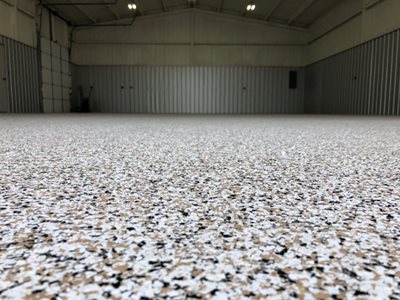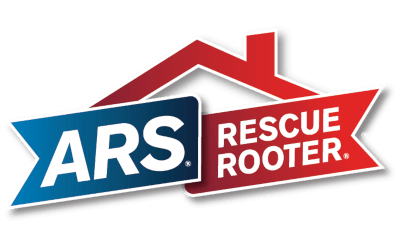
If you're interested in plumbing repair and building, you could consider a career of plumber, pipefitter or steamfitter. There are times when construction activity is slow, so the employment of plumbers, steamfitters, or pipefitters can fluctuate with the economy. However, even during economic downturns, the demand will remain for plumbing systems.
For plumbers, steamfitters, and pipefitters:
Installation and repair of pipes is one of the many jobs available in plumbing. These workers may also install mechanical controls and heating and cooling equipment. Some may even install sprinkler systems. It doesn't matter what kind of plumbing job it is, it is essential to move fluids through pipes. There are several types to choose from and many pipefitters and plumbers will need to know how each one works.
Over the next decade, there will be an increase in plumber jobs of approximately 4%. The demand for plumbers and pipefitters is expected to grow due to population growth and the retirement of baby boomers. The demand for plumbers will also increase with new construction and renovations. Plumbers will be more in demand due to the new regulations concerning fire safety.

Education requirements
In order to become a plumber, steamfitter, or pipelayer, you must have some form of formal education. Many apprenticeship programs can be found through local unions and industry groups. A certificate or associate degree program can be obtained through a community college. These programs usually focus on blueprints and hands-on mechanical and plumbing work. They may also include plumbing code studies and components service and repair.
State-specific education requirements vary for plumbers, steamfitters, and pipefitters. New York City's licensing requirements for plumbers, pipefitters, and steamfitters are three-years in duration, while they are annual in Onondaga county, New York. Some municipalities, such as New York City, require continuing education hours to maintain their license. Many smaller cities do not require continuing education hours.
Duties of the job
Plumbers and pipefitters perform a variety of tasks in the home or workplace. They install, maintain and test heating and plumbing systems. They may also install automatic commands or check gray water systems. Many plumbers and pipefitters have assistants who assist them in their work.
Many apprentices to plumbing and steamfitter trades learn the trade in a four-to five-year apprenticeship. These programs combine classroom and on-thejob training. Apprentices are taught safety, blueprint reading and plumbing code. They also study mathematics, applied Physics, and Chemistry. Apprentices might also work as helpers in other areas such as transporting materials and cleaning work areas.

Career opportunities
Career opportunities for plumbers, pipefitters, and steamfitters are expected to increase by 12 percent from 2014 to 2024. This is due to an increase construction and demand of plumbing services. Employers report still having difficulty finding qualified workers. O*NET is one source that provides important information about workers.
Apprenticeships are offered in the fields of steamfitting, pipefitting, plumbing and pipefitting. Apprentices get 2,000 hours of paid training on the job each year. They also receive technical instruction like blueprint reading, safety procedures and plumbing codes. Apprentices also take classes in mathematics and applied physics. Some unions also offer pre-apprenticeship training programs.
FAQ
What documents are required to apply for building permits?
Along with your SCA, proof must be provided that:
-
There is adequate parking space available for visitors;
-
There are several access routes that can be used.
-
All utilities are readily available.
-
All works must comply with applicable planning regulations.
Is there a way to prepare for negotiation before hand?
Yes!
There are many ways to prepare yourself for negotiations.
One way is to write out the terms and conditions of the agreement
Do I have to think about any additional factors?
Yes. Make sure to check your local laws about what type of projects you can do and what conditions you have to comply with. Some states require you to get approval from the council to build. Some states only require you to notify them about your plans. Find out the position of your local authorities on this matter by checking with them.
Can I cancel or terminate my contract at any time?
Yes - but this must be done within 14 days of signing your contract. You can usually terminate your contract by giving written notice up to 7 working days before the end date specified in your contract. In some cases, however, you might still owe contractor money for work done.
What is a Standard Contract Form and how do you use it?
A template is used to create contracts. These templates often include all of the necessary elements for a contract, such as the date, time and place.
It is possible to modify standard contracts forms to suit the needs of individual clients. For example, certain companies may offer their standard contracts forms.
These forms are not always appropriate for every situation. They can often be a time-saver and a great way to save money.
You might want to consider using one of these standard contract forms.
Is a contract of service a warranty?
A service contract is not a guarantee. It is an agreement between the parties to exchange goods and/or services. In this case, the customer agrees to pay the cost of repair or replacement if the product does not perform satisfactorily. This contract is also called a maintenance contract.
Statistics
- (1) Except as provided in paragraphs (a)(4) and (a)(8) of this section, if the estimated amount of the contract or subcontract is $10 million or more, the contracting officer shall request clearance from the appropriate OFCCP regional office before- (acquisition.gov)
- Don't take their anger personally, they are mad about the situation 99% of the time. (activatemylicense.com)
- (d) Contractor disputes related to compliance with its obligation shall be handled according to the rules, regulations, and relevant orders of the Secretary of Labor (see 41 CFR60-1.1). (acquisition.gov)
- (1) Ascertain the extent to that offers are based on the payment of overtime and shift premiums; and (2) Negotiate contract prices or estimated costs without these premiums or obtain the requirement from other sources. (acquisition.gov)
- Depending on the client's trustworthiness and financial stability, a deposit is usually 10 to 50% of the total contract amount. (lawdepot.com)
External Links
How To
What should a service arrangement include?
Any business relationship requires a Service Agreement. It describes what you expect of each other and how to achieve it. The SA also specifies when and where you expect each party to fulfill its contractual obligations.
The key elements of a successful SA are:
-
Both parties agree on the scope of work and the services they require.
-
Details about the payment terms.
-
A project cost agreement.
-
Any additional charges, like VAT, etc.
-
Whether there is anything else that needs to be discussed.
-
Who will take care of the job if it goes wrong?
-
How disputes can be resolved
-
What happens when one party breaks the contract?
-
What happens when there is a disagreement?
-
When does this contract go into effect
-
What happens when one of the parties doesn't perform?
-
How long can you wait to pay invoices
-
Who pays for travel costs?
-
Where the money comes from.
-
What happens when the client has a change of mind?
-
What happens to the supplier if they don't show up.
-
Who is allowed to access the site during construction
-
What happens when the customer cancels a project?
-
What happens if a product is not as described?
-
What happens if the manufacturer refuses to supply parts.
-
What happens if the equipment is damaged?
-
What happens if a project takes longer than expected?
-
What happens if work isn’t completed in the timeframe agreed upon?
-
What happens if the quality of the finished project falls below expectations?
-
What happens if costs exceed expectations?
-
What happens when the materials are not delivered in time?
-
What happens if the material arrives broken?
-
What happens if the products aren't up to standard?
-
What happens if the job has to be canceled?
-
What happens if the company goes bankrupt?